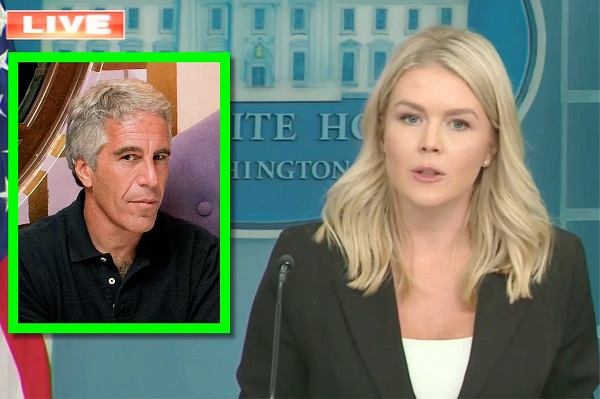Crime
Modern technology helps EPS solve decades-old sexual assault
Police lay charges in 1981 sexual assault
The Edmonton Police Service has charged a 66-year-old male in relation to a sexual assault reported in northeast Edmonton in 1981.
On Friday, Sept. 18, 1981, the Edmonton Police Service responded to the report of a sexual assault in the area of Lancaster Terrace and 156 Avenue. It was reported to police that at approximately 3:30 a.m. a 36-year-old female was exiting her vehicle in a parkade when she was accosted by an unknown male and sexually assaulted. The male then reportedly took the female’s purse and fled the area.
A thorough investigation was conducted at the time; however, investigators were unable to identify or locate a suspect.
In October 2018, investigators with the EPS Historical Crimes Section re-evaluated the file against modern investigate techniques. Using current day forensic testing, a DNA profile of the suspect was developed and using the National DNA Data Bank was matched to John Edward Beausoleil, 66.
With the assistance of the Ontario Provincial Police, Beausoleil, who was 27-years-old at the time of the assault, was arrested at his residence in Orillia, Ontario on Wednesday, Feb. 26, 2020. He has since been transported back to Edmonton where he is facing charges of rape and robbery under the 1981 Criminal Code of Canada.
“Despite our best efforts, historical files can be difficult to solve,” says Staff Sergeant Ryan Tebb with the EPS Historical Crimes Section. “We are pleased that our review of this particular investigation was successful, and today’s technology was able to assist us with an arrest.
Crime
‘We’re Going To Lose’: Steve Bannon Warns Withholding Epstein Files Would Doom GOP


From the Daily Caller News Foundation
By Jason Cohen
Former White House adviser Steve Bannon warned on Friday that Republicans would suffer major losses if President Donald Trump’s administration does not move to release documents related to deceased pedophile Jeffrey Epstein’s crimes and associations.
Axios reported on Sunday that a two-page memo showed the Department Of Justice (DOJ) and FBI found no evidence Epstein kept a “client list” or was murdered, but public doubts have continued. Bannon said on “Bannon’s War Room” that failure to release information would lead to the dissipation of one-tenth of the Make America Great Again (MAGA) movement and significant losses for the Republican Party in the 2026 midterms and the 2028 presidential election.
Dear Readers:
As a nonprofit, we are dependent on the generosity of our readers.
Please consider making a small donation of any amount here.
Thank you!
“It’s not about just a pedophile ring and all that, it’s about who governs us, right? And that’s why it’s not going to go away … For this to go away, you’re going to lose 10% of the MAGA movement,” Bannon said. “If we lose 10% of the MAGA movement right now, we’re going to lose 40 seats in ’26, we’re going to lose the [presidency]. They don’t even have to steal it, which they’re going to try to do in ’28, because they’re going to sit there and they go, ‘They’ve disheartened the hardest-core populist nationalists’ — that’s always been who governs us.”
Bannon also demanded the publication of all the Epstein documents on “Bannon’s War Room” Thursday. He called on the DOJ to go to court and push for the release of the documents or for Trump to appoint a special counsel to manage the publication.
Epstein was arrested in 2019 and charged with sex trafficking. Shortly after, he was found dead in his New York Metropolitan Correctional Center cell shortly after. Officials asserted that he hanged himself in his cell.
However, Epstein’s death has sparked years of theories because of the malfunctioning of prison cameras, along with guards admitting to falsifying documents about checking on the then-inmate. The DOJ inspector general later confirmed that multiple surveillance cameras outside of his cell were inoperable, while others captured the common area outside his door.
Both Bannon and Daily Caller News Foundation co-founder Tucker Carlson have speculated that Epstein had connections to intelligence agencies.
Former Labor Secretary Alex Acosta allegedly indicated that Epstein was tied to intelligence, according to Vicky Ward in The Daily Beast.
Crime
Sweeping Boston Indictment Points to Vast Chinese Narco-Smuggling and Illegal Alien Labor Plot via Mexican Border

 Sam Cooper
Sam Cooper
Case details a pipeline from China through Mexico, trapping trafficked illegal migrants as indentured workers in a sweeping drug network.
In a sweeping indictment that tears into an underworld of Chinese narco infiltration of North American cities — including the smuggling of impoverished Chinese nationals across the Mexican border to work as drug debt slaves in illegal drug houses — seven Chinese nationals living in Massachusetts stand accused of running a sprawling, multimillion-dollar marijuana trafficking and money laundering network across New England.
The backdrop of the human smuggling allegations stretches back to 2020, as an unprecedented wave of illegal Chinese migrants surged across the U.S. border with Mexico — a surge that peaked in 2024 under the Biden administration before the White House reversed course. This explosive migration trend became a flashpoint in heated U.S. election debates, fueling concerns over border security and transnational organized crime.
Six of the accused, including alleged ringleader Jianxiong Chen of Braintree, were arrested this week in coordinated FBI raids across Massachusetts. The border exploitation schemes match exactly with decades-long human smuggling and Chinese Triad criminal pipelines into America reported by The Bureau last summer, based on leaked intelligence documents filed by a Canadian immigration official in 1993. A seventh suspect in the new U.S. indictment, Yanrong Zhu, remains a fugitive and is believed to be moving between Greenfield, Massachusetts, and Brooklyn, New York.
The case paints a striking portrait of China-based criminal organizations operating behind the quiet facades of upscale American suburban properties. Prosecutors allege the defendants owned or partnered with a network of sophisticated indoor grow houses hidden inside single-family residences in Massachusetts, Maine, and beyond, producing kilogram-scale shipments of marijuana. According to court documents, the marijuana was sold in bulk to distributors across the Northeast, and the profits — amounting to millions — were funneled into luxury real estate, cars, jewelry, and further expansion of their illicit operations.
“During a search of [ringleader Chen’s] home in October 2024, over $270,000 in cash was allegedly recovered from the house and from a Porsche in the driveway,” the indictment alleges, “as well as several Chinese passports and other identification documents inside a safe.”
According to the indictment, Chen’s cell phone data confirmed his personal role in orchestrating smuggling logistics and controlling workers. Additional searches of homes where co-defendants lived yielded over 109 kilograms of marijuana, nearly $200,000 in cash, and luxury items including a $65,000 gold Rolex with the price tag still attached.
A photo from the indictment, humorously but damningly, shows alleged ring member Hongbin Wu, 35, wearing a green “money laundering” T-shirt printed with an image of a hot iron pressing U.S. dollar bills on an ironing board — a snapshot that encapsulates the brazenness of the alleged scheme.
Key to FBI allegations of stunning sophistication tying together Chinese narcos along the U.S. East Coast with bases in mainland China is a document allegedly shared among the conspirators.
“The grow house operators maintained contact with each other through a list of marijuana cultivators and distributors from or with ties to China in the region called the ‘East Coast Contact List,’” the indictment alleges.
Investigators say the conspiracy reveals a human smuggling component directly tied to China’s underground migration and debt bondage networks, mirroring exactly the historic intelligence from Canadian and U.S. Homeland Security documents reported by The Bureau last summer.
The alleged leader, 39-year-old Jianxiong Chen, is charged with paying to smuggle Chinese nationals across the Mexican border, then forcing them to work in grow houses while withholding their passports until they repaid enormous smuggling debts.
“Data extracted from Chen’s cell phone allegedly revealed that he helped smuggle Chinese nationals into the United States — putting the aliens to work at one of the grow houses he controlled,” U.S. filings say.
“This case pulls back the curtain on a sprawling criminal enterprise that exploited our immigration system and our communities for personal gain,” said U.S. Attorney Leah Foley. “These defendants allegedly turned quiet homes across the Northeast into hubs for a criminal enterprise — building a multi-million-dollar black-market operation off the backs of an illegal workforce and using our neighborhoods as cover.”
The arrests come amid a surge of Chinese migrants entering the U.S. through Mexico, part of a pattern previously exposed in Canadian diplomatic and intelligence reporting. In 1993, a confidential Canadian government study, “Passports of Convenience,” warned that Chinese government officials, in collusion with Triads and corrupt Latin American partners, were driving a multi-billion-dollar human smuggling business. That report predicted that tens of thousands of migrants from coastal Fujian province would flood North America, empowered by Beijing’s tacit support and organized crime’s global reach.
It also warned that mass migration from China in the 1990s came during a time of political upheaval, a trend that has apparently re-emerged while President Xi Jinping’s economic and political guidance has been increasingly questioned among mainland citizens, particularly since the Covid-19 pandemic crisis and lockdowns inside China.
The 1993 report, obtained and analyzed exclusively by The Bureau, described how the Triads — particularly those connected with Chinese Communist networks in Fujian — would leverage human smuggling to extend their influence into American cities. The migrants, often saddled with debts of $50,000 or more, became trapped in forced labor, prostitution, or drug networks, coerced to repay their passage fees.
“Alien smuggling is closely linked to narcotics smuggling; many of the persons smuggled in have to resort to prostitution or drug dealing to pay the smugglers,” the 1993 Canadian immigration report says.

Citing legal filings in one U.S. Homeland Security case, it says a Triad member who reportedly smuggled 150 Fujianese migrants into New York stated that if fees aren’t paid “the victims are often tortured until the money is paid.”
Supporting these early warnings, a 1995 U.S. Department of Justice report echoed the Canadian findings, stating that “up to 100,000 Chinese aliens are smuggled into the United States each year,” with 85 percent originating from Fujian. The DOJ report also cited allegations of “negotiations between the Sun Yee On Triad and the Mainland Chinese Government,” suggesting that smuggling and criminal infiltration were tolerated — if not orchestrated — to extend China’s economic and political influence abroad.
That report added American investigators and immigration officials concluded it was nearly impossible to counter waves of illegal immigration from China with deportation orders, and the government should focus on “the larger menace working its way into U.S. cities: Chinese transnational criminal organizations.”
“To combat the growing threat of Asian organized crime in the West,” it says, “law enforcement officials must tackle this new global problem through an understanding of the Triad system and the nature of its threat to Western countries.”
In New England, the Braintree indictment shows how those old predictions have not only materialized but scaled up.
These networks operate by embedding Chinese nationals into illicit industries in North America, from black-market cannabis cultivation to high-end money laundering. Once inside, they channel profits back through complex underground banking channels that tie the North American drug economy to China’s export-driven cash flows and, ultimately, to powerful actors in Beijing.
In recent years, Maine has emerged as a strategic hotspot for illicit Chinese-controlled marijuana operations. As The Bureau has reported, the state’s vast rural areas, lax local oversight, and proximity to East Coast urban markets have made it a favored location for covert grow houses.
-

 Business2 days ago
Business2 days agoCBC six-figure salaries soar
-

 Addictions2 days ago
Addictions2 days agoCan addiction be predicted—and prevented?
-

 Addictions2 days ago
Addictions2 days agoMore young men want to restrict pornography: survey
-

 International2 days ago
International2 days agoSupport for the Ukraine war continues because no one elected is actually in charge.
-

 Business2 days ago
Business2 days agoTrump slaps Brazil with tariffs over social media censorship
-

 National2 days ago
National2 days agoHow Long Will Mark Carney’s Post-Election Honeymoon Last? – Michelle Rempel Garner
-

 espionage1 day ago
espionage1 day agoFBI’s Dan Bongino may resign after dispute about Epstein files with Pam Bondi
-

 Brownstone Institute2 days ago
Brownstone Institute2 days agoNet Zero: The Mystery of the Falling Fertility








